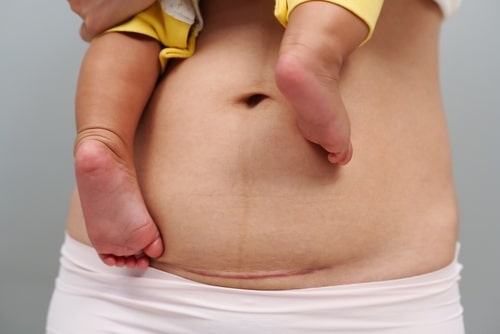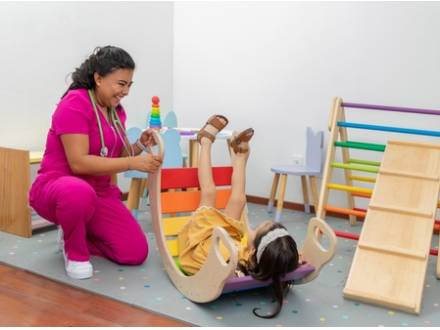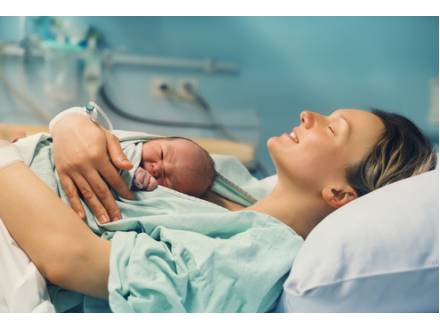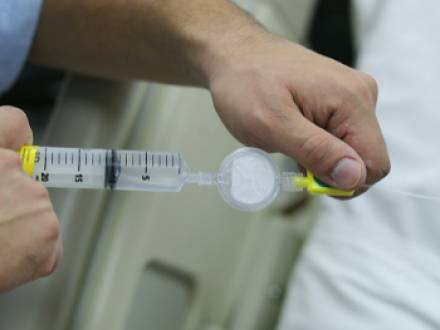Chicago, IL 60601
FREE CONSULTATIONS 312-462-4200
TOLL FREE 833-462-4200
Recent Blog Posts
Possible Legal Actions for Delayed C-Section and Fetal Distress
 Fetal distress and delayed cesarean sections are serious issues that can lead to devastating consequences. When medical professionals do not recognize signs of fetal distress or do not perform a timely C-section, it may be considered medical malpractice.
Fetal distress and delayed cesarean sections are serious issues that can lead to devastating consequences. When medical professionals do not recognize signs of fetal distress or do not perform a timely C-section, it may be considered medical malpractice.
If you or your child is suffering in 2026 because of a delayed C-section, understanding your legal rights is important. Our Chicago, IL birth injury attorneys will listen to your story. We know that nothing can undo the harm a careless doctor causes, but we can help you get as much compensation as possible to make the future a bit easier for your family.
When is a C-Section Necessary?
A cesarean section is a surgical procedure during which an infant is born through a cut in the mother’s lower abdomen. Just under one-third of U.S. babies are delivered by C-section, according to the American Medical Association. While many mothers plan for vaginal births, unexpected complications sometimes make a C-section the safer choice.
When is Forceps or Vacuum Use Necessary During Delivery?
 The birth of a child should be one of the happiest moments in a family's life. However, when labor does not progress as expected, doctors may recommend using forceps or a vacuum to assist with delivery. These instruments can help bring a baby safely into the world when used correctly and at the appropriate time. Unfortunately, the improper use of forceps or vacuum extraction can result in serious birth injuries that affect children and families for a lifetime.
The birth of a child should be one of the happiest moments in a family's life. However, when labor does not progress as expected, doctors may recommend using forceps or a vacuum to assist with delivery. These instruments can help bring a baby safely into the world when used correctly and at the appropriate time. Unfortunately, the improper use of forceps or vacuum extraction can result in serious birth injuries that affect children and families for a lifetime.
Understanding when these delivery methods are medically necessary and when they pose unnecessary risks can help families recognize whether proper standards of care were followed during their child's birth. If you think your child may have been hurt because forceps or vacuum extraction were wrongly or badly used, you should talk to one of our Chicago infant injury attorneys. Our consultations are free and we can help you understand whether you have a case.
The Lifetime Cost of Erb’s Palsy
 Erb’s palsy is a condition with a lasting physical, emotional, and financial impact. Parents sometimes do not understand how expensive this condition is until they begin paying for therapy, medical visits, surgeries, and adaptive equipment. Unfortunately, Erb’s palsy can be the result of medical malpractice.
Erb’s palsy is a condition with a lasting physical, emotional, and financial impact. Parents sometimes do not understand how expensive this condition is until they begin paying for therapy, medical visits, surgeries, and adaptive equipment. Unfortunately, Erb’s palsy can be the result of medical malpractice.
When a medical professional does not follow safe delivery procedures, you have the right to hold them accountable for any harm they cause. First, speak to a Chicago, IL birth injury lawyer at Birth Injury Law Alliance, Ltd. to learn more about your legal options. There is nothing anyone can do to right the wrong that was done to your child and family, but we can help alleviate the financial burden.
How Does Malpractice Result in Erb’s Palsy?
Erb’s palsy happens when the nerves in a baby’s shoulder stretch or tear during birth. These nerves form the brachial plexus, which controls movement in the shoulder, arm, and hand. Many of these injuries occur when a medical provider does not follow safe delivery practices.
Can I Sue an Illinois Doctor for a Botched Abortion?
 Abortion is a deeply personal and often painful decision. For many women, it is an act of medical necessity. It is seldom a choice made lightly. Unfortunately, even in professional medical settings, medical mistakes during abortion procedures happen. When those errors cause a woman harm, the experience can be devastating.
Abortion is a deeply personal and often painful decision. For many women, it is an act of medical necessity. It is seldom a choice made lightly. Unfortunately, even in professional medical settings, medical mistakes during abortion procedures happen. When those errors cause a woman harm, the experience can be devastating.
Illinois law in 2025 recognizes that every patient, regardless of the procedure involved, has the right to competent, safe medical care. When a doctor fails to provide that standard of care and a woman suffers injury as a result, she may have grounds for a medical malpractice claim. At Birth Injury Law Alliance, Ltd., our Chicago birth injury lawyer helps women pursue justice and compensation for injuries sustained during negligent or botched abortion procedures.
What is a Doctor’s Duty of Care in Abortion Procedures?
In Illinois, as in every other state, doctors, nurses, and other healthcare providers are legally required to uphold a certain standard of care. This means they must act with the same level of competence and caution that a reasonably skilled professional would use in similar circumstances. That standard applies to all types of medical procedures, including abortions.
Who Pays for Occupational Therapy for Cerebral Palsy?
 When a child is diagnosed with cerebral palsy, the first question parents ask is how they will afford the care their child needs. Occupational therapy is one of the most important parts of treatment. It helps children improve coordination, learn daily living skills, and gain independence.
When a child is diagnosed with cerebral palsy, the first question parents ask is how they will afford the care their child needs. Occupational therapy is one of the most important parts of treatment. It helps children improve coordination, learn daily living skills, and gain independence.
But the therapy is long-term, continuing throughout childhood, and the costs can be very high. Families in Illinois who suspect that medical negligence caused their child’s cerebral palsy may be entitled to compensation to cover those expenses. This can make a major difference in how families plan for the future and support their child’s ongoing care.
If your child has cerebral palsy and you think it happened because a doctor did something wrong, you should talk to our Chicago, IL birth injury lawyers to find out what your options are.
The Husband Stitch and the Need for Consent
 People need to be able to trust their doctors to provide safe and necessary medical care. We all expect to be asked for consent before having procedures that could be painful or harmful. This is especially important when a procedure offers no clear medical benefit.
People need to be able to trust their doctors to provide safe and necessary medical care. We all expect to be asked for consent before having procedures that could be painful or harmful. This is especially important when a procedure offers no clear medical benefit.
The "husband stitch" is an example of a medical procedure that is not intended to benefit the mother’s health and is often performed without consent. The practice could fall under the category of medical malpractice if the lack of consent and harm can be proven.
If you suspect a husband stitch was added during your delivery, talk to a qualified Chicago, IL maternal injury attorney. Our firm offers free consultations to discuss potential claims and help you protect your rights.
Is the Husband Stitch Real? And if So, What Is It?
Although difficult to prove, the husband stitch is, unfortunately, something that has been performed on many women, without their knowledge or consent. It refers to an unnecessary stitch that is added after a vaginal tear or episiotomy during childbirth. The alleged intent is to make the vaginal area tighter for the benefit of the mother’s male partner. There is no medical reason for this procedure.
What Is Erb’s Palsy?
 Learning that your newborn has a medical condition can feel overwhelming. Many parents in Chicago and Cook County first hear the term "Erb’s palsy" shortly after delivery, often without much explanation. Doctors may mention nerves, birth trauma, or the possibility of long-term weakness in your child’s arm. For parents who just want answers and hope, this can be very scary.
Learning that your newborn has a medical condition can feel overwhelming. Many parents in Chicago and Cook County first hear the term "Erb’s palsy" shortly after delivery, often without much explanation. Doctors may mention nerves, birth trauma, or the possibility of long-term weakness in your child’s arm. For parents who just want answers and hope, this can be very scary.
At Birth Injury Law Alliance, Ltd., we want to help you understand the basics about Erb’s palsy and how it happens so you can understand what it means for you and your baby. And if a doctor, nurse, or other medical staff member was responsible for this condition, you should know if you can take legal action. Our Cook County birth injury lawyers are here to help.
What Is Erb’s Palsy?
Erb’s palsy is a birth injury that occurs when the brachial plexus—the network of nerves running from the neck through the shoulder into the arm—is damaged during delivery. These nerves control movement and feeling in the shoulder, arm, and hand. If they are stretched, torn, or otherwise injured, the result can be weakness, loss of sensation, or even paralysis in the affected arm. Some children recover fully, while others face lasting challenges.
What Treatments Can Be Used for Infants With Cystic Encephalomalacia?
 When a newborn suffers a brain injury, the effects can alter every part of that child’s life and the family’s future. Among the most serious conditions is cystic encephalomalacia, a rare but devastating form of brain damage that involves the formation of fluid-filled cysts within the brain. This condition is permanent, often leaving children with lifelong developmental and medical challenges. Parents who are coping with this diagnosis need clear information about treatment options, long-term care, and their legal rights if medical negligence played a role.
When a newborn suffers a brain injury, the effects can alter every part of that child’s life and the family’s future. Among the most serious conditions is cystic encephalomalacia, a rare but devastating form of brain damage that involves the formation of fluid-filled cysts within the brain. This condition is permanent, often leaving children with lifelong developmental and medical challenges. Parents who are coping with this diagnosis need clear information about treatment options, long-term care, and their legal rights if medical negligence played a role.
As of September 2025, doctors in Illinois continue to rely on a combination of medical treatment, therapy, and supportive care to address the effects of cystic encephalomalacia. While there is no cure for the condition, early intervention and appropriate management can make a significant difference in a child’s quality of life.
Signs of Nerve Damage from an Epidural
 Epidurals are one of the most common forms of pain management during childbirth. For many families in Cook County, they are seen as a routine way to make delivery more manageable and less traumatic. But while most epidurals are given safely, there are cases where things go wrong.
Epidurals are one of the most common forms of pain management during childbirth. For many families in Cook County, they are seen as a routine way to make delivery more manageable and less traumatic. But while most epidurals are given safely, there are cases where things go wrong.
Nerve damage from an epidural can be devastating, leading to lasting pain, mobility issues, or even permanent disability for a mother. Recognizing the signs of nerve injury early is critical, both for your medical care and for protecting your legal rights if the damage was caused by medical negligence.
Attorney Allen Schwartz and his team have decades of experience handling birth injury cases. He has secured many multi-million dollar verdicts and settlements for families whose lives were permanently altered by mistakes in labor and delivery. If your family has been affected by epidural-related nerve damage, experienced legal guidance can help you understand your options.
Is Poor Postnatal Care Considered Malpractice?
 When a mother delivers a baby, the intense focus on labor and delivery can give the impression that the hard part is over. But serious medical complications can still happen in the hours, days, and weeks after a baby is born. If a hospital or healthcare provider does not monitor and treat those complications appropriately, the consequences can be life-altering and even fatal for the mother, the newborn, or both.
When a mother delivers a baby, the intense focus on labor and delivery can give the impression that the hard part is over. But serious medical complications can still happen in the hours, days, and weeks after a baby is born. If a hospital or healthcare provider does not monitor and treat those complications appropriately, the consequences can be life-altering and even fatal for the mother, the newborn, or both.
Families affected by negligent postnatal care may have grounds to bring a malpractice claim. These cases are complicated, and the emotional difficulty is often immense, but taking legal action can help hold providers accountable and get much-needed financial support for recovery. To understand whether you have a valid malpractice claim, speak with a Chicago, IL birth injury lawyer who can review your case and offer compassionate guidance.





